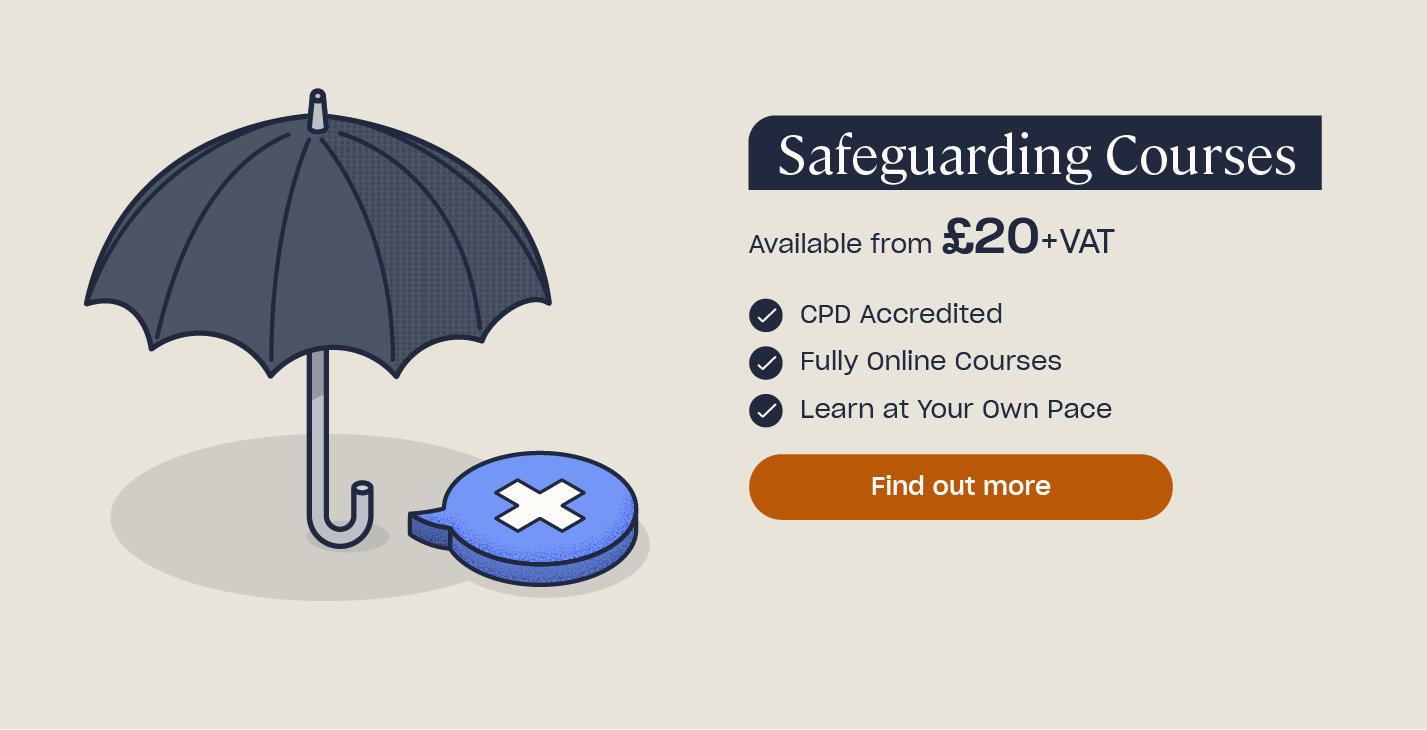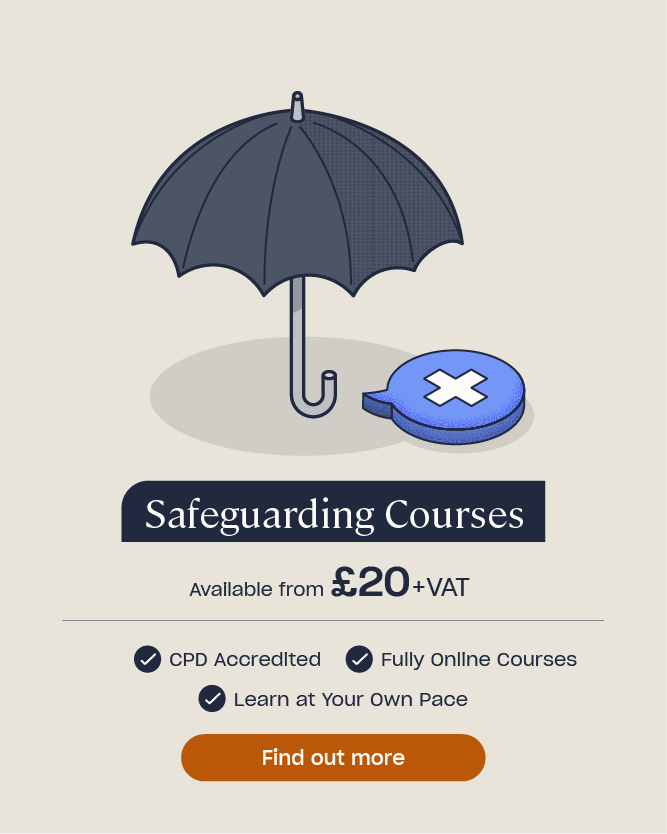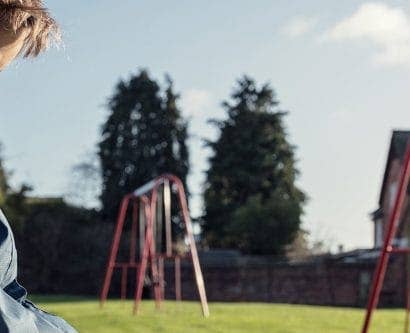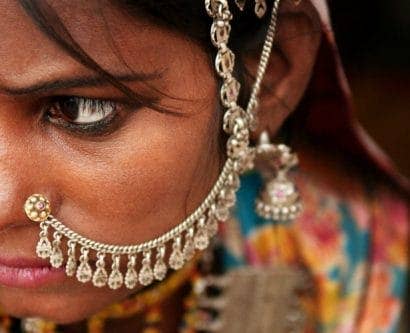Signs of Abuse in Children
This guide will introduce you to the potential signs of abuse in children and what action to take if you suspect abuse.
Forms of Child Abuse
Child abuse is often categorised into four types:
- Neglect.
- Physical abuse.
- Emotional abuse.
- Sexual abuse.
Children experiencing abuse often are subject to more than one form of abuse, and the signs can vary according to factors such as age. Furthermore, children may not always disclose abuse, preferring to remain silent, so it’s so crucial to know the signs.
Knowing how to help children who are being abused is a complex situation, and further training is vital to understand why children don’t disclose abuse and how to respond when you think a child is suffering.
Need a Course?
Our range of Safeguarding Children Courses have been developed to ensure that you are able to understand current safeguarding issues and apply the correct actions and procedures where necessary.
Signs of Child Neglect
Neglect is the persistent failure to meet a child’s basic needs. There are four main forms of child neglect: emotional, medical, educational, and physical. Neglect is the most common form of child abuse.
Children who are being neglected may not get the love they need, may not have adequate clothing, support, supervision, nourishment and medical or health care. They may also suffer from other forms of abuse and may not be protected from physical and/or emotional harm.
The following physical signs may indicate that a child is being neglected:
- Appearing hungry as though they may have gone without breakfast.
- Turning up to school without lunch or money for food.
- Repeated injuries caused by lack of supervision.
- Skin sores, rashes, flea bites, scabies or ringworm.
- A thin or swollen tummy.
- Having poor hygiene, being visibly dirty or smelling.
- Being without adequate clothing.
- Being tired.
- Having poor language or communication skills.
- Being anaemic.
- Not meeting developmental milestones.
- Appearing to care for family members.
- Being unsupervised.
- Living in an unsuitable home environment.
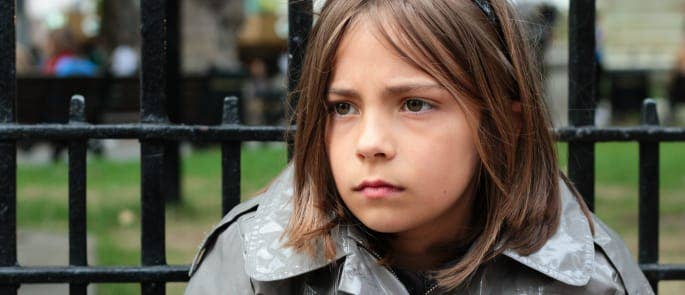
Signs of Physical Abuse in Children
Physical abuse is hurting a child through physical, violent and aggressive means and is never accidental, such as hitting, burning, or poisoning. Parents and carers who abuse a child may do so because of emotional or behaviour problems, having experienced abuse themselves, health issues, stress and/or not understanding the needs of a child.
Furthermore, some new parents struggle to adapt and to understand the needs of the child. For example, they may see the child cries as an attempt to annoy them and they might become frustrated.
Some signs of physical abuse include:
- Bruises.
- Swelling.
- Scarring.
- Burns or scalds.
- Broken bones.
- Fractures.
- Bite marks.
Children who have been poisoned may experience symptoms such as drowsiness, seizures and vomiting. Parents who abuse babies can cause non-accidental head injuries if they shake or hit them. Some parents may tell a child they are ill and give them medication which can make them ill or lead to death.
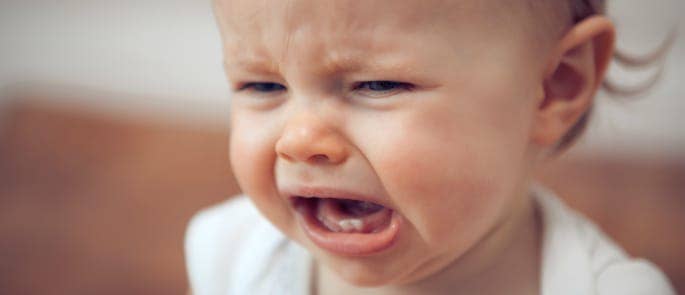
Signs of Emotional Abuse in Children
Emotional or psychological abuse is the sustained maltreatment or neglect of the emotional needs of a child.
Signs of emotional abuse may include:
- Younger children being overly affectionate or clingy towards strangers.
- Lacking confidence and being anxious.
- Struggling to control emotions.
- Lacking social skills.
- Having few friendships.
- Appearing to have a negative relationship with parent or carer.
- Seeming isolated from their parent or carer.
- Being aggressive and cruel to other children and towards animals.
- Using language inappropriate for their age.
Emotional abuse happens for a number of reasons. Parents may experience financial, material, psychological, and/or emotional distress and without help, this distress can often manifest as abuse.
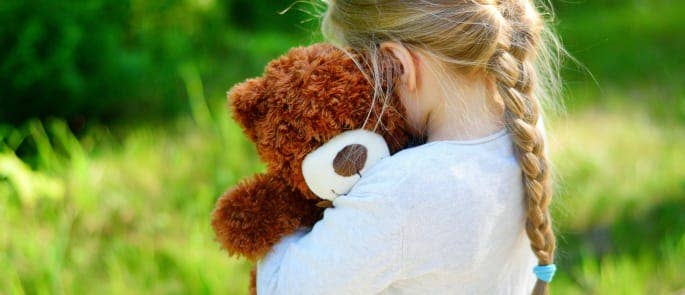
Two Categories of Emotional Abuse
Emotional abuse of children tends to form into two categories, passive and active.
Passive emotional abuse is more subtle than active. This is when a parent or carer refuses to provide their child with the kind of emotional care they need. It may involve emotional unavailability, bad attitudes towards the child, a failure to recognise that they must support the child, using the child as a support mechanism for themselves, involving the child in tasks that they are not emotionally ready for, and a failure to encourage social engagement with peers.

Active emotional abuse involves taking anger and frustration out on a child, expecting a child to meet the emotional needs of an adult, limiting opportunities for the child, expecting the child to take on responsibilities not appropriate for their age, being emotionally unavailable, and forgetting to provide the child with praise.
A perpetrator of emotional abuse may:
- Ignore their victim.
- Display excessive control.
- Manipulate their victim.
- Refuse to say kind comments or acknowledge positive behaviour.
- Blame or scapegoat the child.
- Criticise, threaten, and/or humiliate the child.
- Use sarcasm and cruel jokes to mock the child.
- Make the child perform degrading acts.
- Push a child beyond their physical, mental or emotional limitations.
- Expose the victim to distressing events such as domestic abuse, drug taking, verbal fights, etc.
- Refuse to have an emotional life with the child, also known as emotional unavailability.
Signs of Sexual Abuse in Children
When a child is sexually abused, it means that they have been forced or manipulated into taking part in sexual activities. The exploitation of children sexually isn’t always physical; it can happen online too. There are a number of warning signs of child sexual exploitation that you need to be alert to, such as behavioural changes and health issues.
The effects of sexual abuse include:
- Promiscuity at a young age.
- The use of sexual language inappropriate for their age.
- Knowledge of sexual information that you wouldn’t expect.
- Sexually transmitted infections.
- Pregnancy.
- Trauma.
- Unusual discharge.
- Anal or vaginal soreness.
- Avoiding being alone with certain people like family members or family friends.
- Appearing afraid to socialise or interact with a certain person.
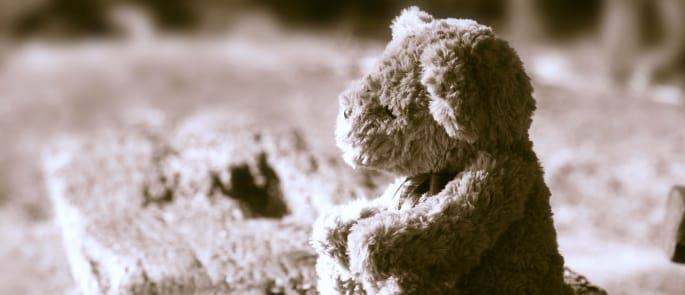
What Can I Do if I Recognise Signs of Abuse?
If you think that a child is being abused, the best thing you can do is be prepared. The NSPCC recommends that anyone worried about a child takes the following actions:
- Keep a note of concerns and the child’s behaviour. Keeping a diary helps to spot patterns of behaviour and use a Child Protection Body Map.
- Maintain your ongoing relationship with the child. Keep talking to them and being supportive.
- Speak to other professionals who come into contact with the child, such as teachers, health visitors or the Designated Safeguarding Lead at your organisation.
- Talk to the NSPCC or a trusted friend or family member to get another perspective and talk through your concerns.
If you’re not sure what to do, and you’re worried about the safety and wellbeing of a child, contact the NSPCC for advice from their professional counsellors.
The NSPCC are available 24/7 to help. You can call them on 0808 800 5000.
What to Read Next:
- Warning Signs of Child Sexual Exploitation (CSE)
- Understanding Why Children May Not Disclose Abuse
- Understanding the Cycle of Violence in Domestic Abuse
- Guide to Safeguarding Legislation
- Signs of Abuse in Adults
- Adverse Childhood Experiences: Guidance for Schools
- Child Sexual Abuse: Guidance for Schools
- Understanding Why Children May Stay Quiet About Abuse
- Child Safeguarding Quiz


